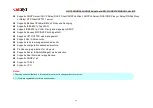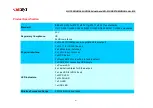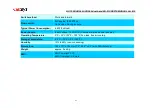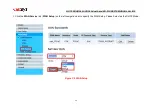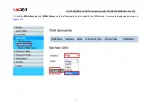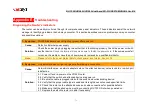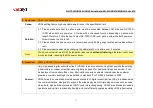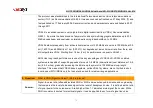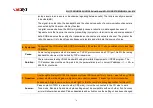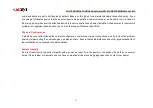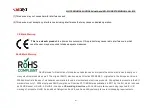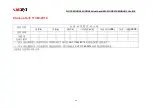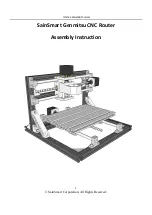
NV-720D ADSL2+/VDSL2 dual band Wi-Fi USER’S MANUAL Ver. B.2
73
The protocol was standardized in the International Telecommunication Union telecommunications
sector (ITU-T) as Recommendation G.993.2. It was announced as finalized on 27 May 2005, [1] and
first published on 17 February 2006. Several corrections and amendments were published in 2007
through 2011.
VDSL2 is an enhancement to very-high-bit rate digital subscriber line (VDSL), Recommendation
G.993.1. It permits the transmission of asymmetric and symmetric aggregate data rates up to 200
Mbit/s downstream and upstream on twisted pairs using a bandwidth up to 30 MHz.
VDSL2 deteriorates quickly from a theoretical maximum of 250 Mbit/s at source to 100 Mbit/s at 0.5
km (1,600 ft.) and 50 Mbit/s at 1 km (3,300 ft.), but degrades at a much slower rate from there, and
still outperforms VDSL. Starting from 1.6 km (1 mi) its performance is equal to ADSL2+.
ADSL-like long reach performance is one of the key advantages of VDSL2. LR-VDSL2 enabled
systems are capable of supporting speeds of around 1–4 Mbit/s (downstream) over distances of 4–5
km (2.5–3 miles), gradually increasing the bit rate up to symmetric 100 Mbit/s as loop-length
shortens. This means that VDSL2-based systems, unlike VDSL1 systems, are not limited to short
local loops or MTU/MDUs only, but can also be used for medium range applications.
5. Question:
What is SNR (Signal-to-Noise)? (Only reference)
Answer:
Signal-to-noise ratio (often abbreviated SNR or S/N) is a measure used in science and engineering
that compares the level of a desired signal to the level of background noise. It is defined as the ratio
of signal power to the noise power. A ratio higher than 1:1 indicates more signal than noise. While
SNR is commonly quoted for electrical signals, it can be applied to any form of signal (such as


